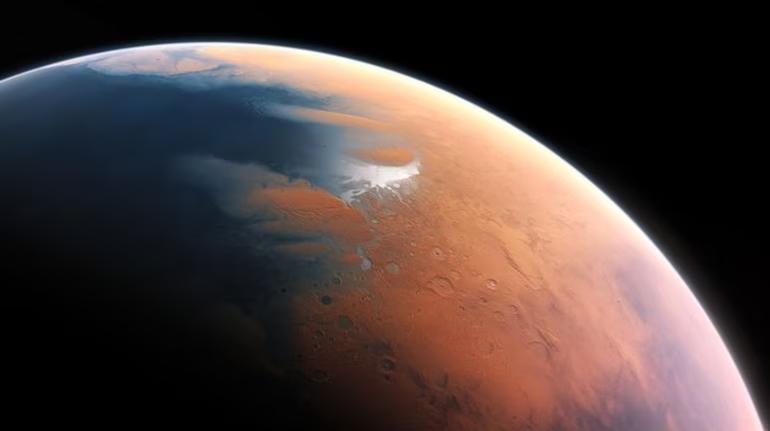
Title: Mars may have once had rain & snowfall, finds new study
Mars, the red planet, has long been a subject of fascination for scientists and space enthusiasts alike. For decades, researchers have been studying the Martian surface, searching for clues about its past and potential for supporting life. A recent study by the University of Colorado Boulder has shed new light on the planet’s history, suggesting that Mars may have once experienced rainfall and snowfall, feeding valleys and channels. This finding has significant implications for our understanding of the planet’s past and its potential for supporting life.
Studies have long suggested that there is evidence that at least some water existed on the surface of Mars around 4 billion years ago. However, the source of the water has not been ascertained yet. The new study, published in the journal Science, provides further evidence that water once flowed on Mars, and that the planet may have had conditions suitable for life.
The researchers used advanced computer simulations to recreate the Martian climate 4 billion years ago. They found that the planet’s atmosphere was much thicker and more Earth-like than it is today, with a strong greenhouse effect that would have trapped heat and created a warm and wet environment. This would have allowed for the formation of rivers, lakes, and even oceans, and would have provided a suitable habitat for life to emerge and thrive.
One of the key pieces of evidence supporting this theory is the presence of ancient riverbeds and lakebeds on the Martian surface. These features were formed by flowing water, and would have required a wet and warm climate to create. The researchers used satellite imagery and data from NASA’s Mars Reconnaissance Orbiter to study these features and determine their age and composition.
The study also found evidence of ancient volcanic activity on Mars, which would have released large amounts of carbon dioxide and water vapor into the atmosphere. This would have contributed to the planet’s warm and wet climate, and would have provided a source of water for the rivers, lakes, and oceans.
While the study’s findings are exciting and significant, they are not without controversy. Some scientists have questioned the accuracy of the computer simulations used in the study, and have suggested that the planet’s climate may have been much colder and drier than the researchers suggest. However, the study’s authors argue that their simulations are based on a careful analysis of the available data, and that they provide a more accurate picture of the Martian climate 4 billion years ago.
The implications of the study’s findings are significant, and have important implications for our understanding of the search for life on Mars. If Mars once had a warm and wet climate, it would have provided a suitable habitat for life to emerge and thrive. This would mean that the search for life on Mars is not just about finding water, but also about searching for evidence of life in the form of fossils, biomarkers, or other signs of biological activity.
The study’s findings also have important implications for our understanding of the formation and evolution of the solar system. Mars is one of the most Earth-like planets in the solar system, and its similarities to Earth make it an important target for astrobiological research. The study’s findings suggest that Mars may have had a more Earth-like climate in the past, and that it may have had conditions suitable for life to emerge and thrive.
In conclusion, the study’s findings are a significant step forward in our understanding of Mars and its potential for supporting life. The presence of ancient riverbeds, lakebeds, and volcanic activity on the Martian surface provides strong evidence that the planet once had a warm and wet climate, and that it may have had conditions suitable for life to emerge and thrive. While the study’s findings are not without controversy, they provide a compelling argument for the importance of continued research into the search for life on Mars.






